|
In 1982, a friend gave me an Ameraucana rooster to go with my flock of mixed-breed Bantam hens. This rooster had a blue-gray front and orange hackles and saddle. In hatching his offspring the first year, I was surprised to see one beautiful all-gray chick. It was a hen, and the next year, two more gray chicks were hatched.
Having never seen an all-gray chicken, I decided to make a project of creating a small flock of blue-gray hens. Progress was slow with only one or two gray chicks per year at first and occasional losses to predators. As the chicks matured, I was delighted to learn they laid blue, aqua, and green-tinted eggs.
Over the years, for the sake of the gene pool, I crossed my hens with Mille Fleurs, Porcelain Mille Fleurs, and Antwerp Belgian Quail Bantams. Using these other breeds was good for the gene pool, but of course produced unwanted colors and feathered legs. The Belgian Quail added those cute little puffy cheek feathers and very tame dispositions.
All through the 1990s, I re-selected for the blue color and for legs with no feathering. Eliminating the orange in the hackles and saddles of the roosters has taken some time. At the same time, I selectively bred the whole flock to have the smallest (or none at all) combs and wattles. In our extreme climate, frostbite on the comb and wattles is a painful problem.
I have encouraged the "setting " trait in my flock, and today they are good layers of surprisingly large eggs for their size. The hens are usually good setters, good mothers, and will set and raise several clutches per summer. They will set duck and peacock eggs willingly.
Today, I have a flock of 40 to 50 pretty, blue-gray hens that lay pastel-colored eggs. They are good foragers, good layers, and good setters. They have no combs or wattles to freeze in the winter and no feathering on their slate-colored legs. The roosters have shiny black hackles and saddles to contrast with their gray bodies, and many of the hens have cute, fluffy cheek feathers. They are tame, and the roosters do not turn aggressive toward people. The blue color does not breed completely true, and with each year I am still making selections to improve this flock.
They have been a wonderful addition to our homestead farm and a delight to have around.
|
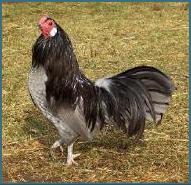
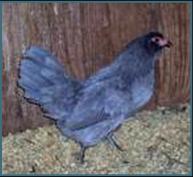
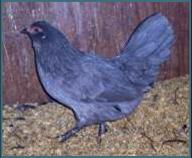
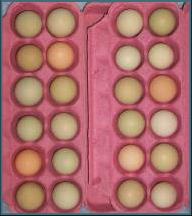
|
Siberian Blue rooster |
|
Siberian Blue hens |
|
Siberian Blues lay eggs with pastel blue, aqua, and green-tinted shells. |
|
Siberian Blue Bantam Chickens |
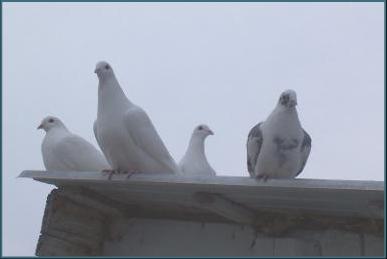
|
Besides our chickens, we also have a flock of white and pied doves whose job is simply to be beautiful.
They fly free during the day, foraging for seeds and grain, then return to their dove house every night.
|
|
Doves |
|
About Our Farm |
|
Goats |
|
Chickens |
|
Activities |
|
Horses & Ponies |
|
Maine Coon Cats |
|
Farm |
|
Art |
|
Home |

|
207-365-7633 Siberia Farm siberiafarm5@fairpoint.net Donna Chase 180 Siberia Rd., Stacyville, ME 04777
|